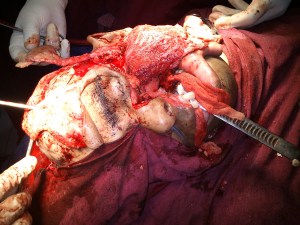
STROKE VOLUME VARIATION GUIDED FLUID MANAGEMENT INTRA OPERATIVELY USING CARDIAC OUTPUT MONITOR IN A CASE OF CRANIO FACIAL RESECTION
Abstract
Early aggressive resuscitation of critically ill patients may limit or reverse tissue hypoxia, progression to organ failure, and improve outcome. Similarly, a protocol to optimize preload and cardiac output in patients undergoing major surgery reduced postoperative complications and length of stay. However, overzealous fluid resuscitation has been associated with increased complications, increased length of intensive care unit (ICU) and hospital stay, and increased mortality.Cardiac filling pressure including CVP and pulmonary artery occlusion pressure have been traditionally used to guide fluid management. Studies conducted over past decades demonstrate that cardiac filling pressures are unable to predict fluid responsiveness Currently stroke volume variation that normally occur during phases of respiratory cycle is used as guide for fluid responsiveness during major surgeries.
Full Text:
PDFReferences
Annals of intensive care-2011 Hemodynamic parameters to fluid therapy. Paul and Marik ,Xavier Monnert,Jean Collis Teboul
Anaesthesia and Analgesia 2009 Connesson M,Musard H,Dessebe O et al .The ability of S.V.V obtained with vigileo / flo trac system to monitor fluid responsiveness in mechanically ventilated patients
Accuracy of stroke volume variation compared with pleth variability index to predict fluid responsiveness in mechanically ventilated patients undergoing major surgery –European Journal of Anaesthesiology June 2010 4.Emerging trends in minimally invasive hemodynamic monitoring an d optimisation of fluid responsiveness –European journal of Anaesthesiology November 2009
Refbacks
- There are currently no refbacks.

This work is licensed under a Creative Commons Attribution-NoDerivatives 4.0 International License.
An initiative of The Tamil Nadu Dr M.G.R. Medical University